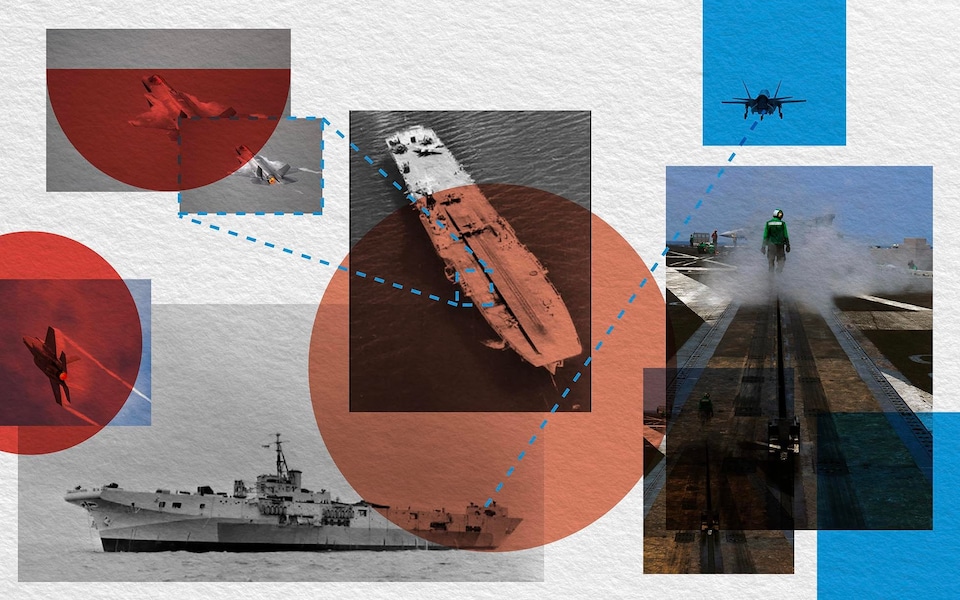The launch system can either be powered by steam or eletromagnetic power and handle an aircraft weighing 25 tonnes. The recovery system must handle 21 tonnes.
Gareth Corfield, a defence specialist, said that the proposed system is not able to launch the F-35C and is likely to be “an early look at how the Tempest optionally manned aircraft could be used by the Royal Navy.”
“Timing is key and the 2023 installation date might fall towards the end of HMS Queen Elizabeth’s first major refit after her South China Sea deployment later this year.”

The Royal Navy is seeking a catapult system to launch drones and jets from aircraft carriers as a possible “Plan B” for the F-35. The MoD has asked industry for ideas about future “aircraft launch and recovery systems” that could be fitted to ships in the next five years. The document issued by the MoD says it “wishes to assess the availability of electromagnetic catapult, and arrestor wire systems for the launch and recovery of air vehicles”.
Gareth Corfield, a defence specialist, said that the proposed system is not able to launch the F-35C and is likely to be “an early look at how the Tempest optionally manned aircraft could be used by the Royal Navy.”
“Timing is key and the 2023 installation date might fall towards the end of HMS Queen Elizabeth’s first major refit after her South China Sea deployment later this year.”

The Royal Navy is seeking a catapult system to launch drones and jets from aircraft carriers as a possible “Plan B” for the F-35. The MoD has asked industry for ideas about future “aircraft launch and recovery systems” that could be fitted to ships in the next five years. The document issued by the MoD says it “wishes to assess the availability of electromagnetic catapult, and arrestor wire systems for the launch and recovery of air vehicles”.



